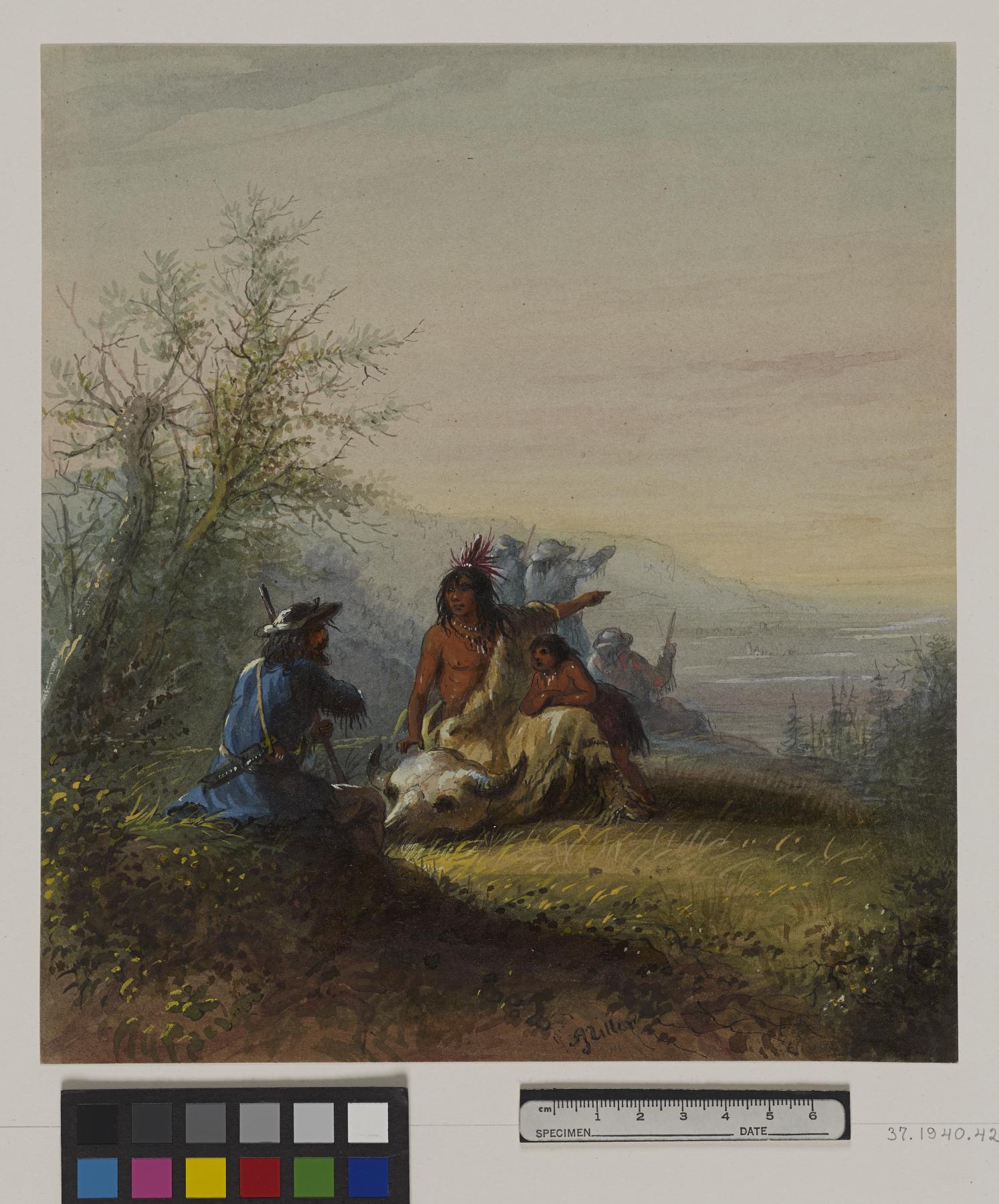Group of a Mountaineer and Kansas Indian
(18th and 19th Centuries )
Extracts from Alfred Jacob Miller’s original text, which accompanied his images of Native Americans, are included below for reference. These words, which shaped how Miller’s contemporaries viewed the watercolors, reveal the racism and sexism embedded in 19th-century exploration and colonization of the western part of what is today the United States.
"The Kansas Indians live pretty much now on the recollection of the past: -the future for them is entirely hopeless. Somewhat like the Beggars of Spain, who congregate about old ruins and amuse themselves by relating to the other legends of hidden treasures; - and former glories. This tribe reverts to a by-gone period, when game was plentiful around them, and the skilful use of their bows and arrows gave them an abundance of food for their lodges. In the sketch a Kansas Indian is recounting to a Trapper the remembrances of his youth, when the Buffalo in countless herds traversed the prairie, and wild horses in large bands were captured and converted to their use. All these have disappeared, and the only mementoes now left are the skulls of Buffalo lying about the prairie and bleaching in the sun. They are in receipt of Government annuities, but from several causes these are injurious to them. In a few, very few years, they will be swept from the face of the earth, and the places that now know them shall behold them no more-forever." A.J. Miller, extracted from "The West of Alfred Jacob Miller" (1837).
In July 1858 William T. Walters commissioned 200 watercolors at twelve dollars apiece from Baltimore born artist Alfred Jacob Miller. These paintings were each accompanied by a descriptive text, and were delivered in installments over the next twenty-one months and ultimately were bound in three albums. Transcriptions of field-sketches drawn during the 1837 expedition that Miller had undertaken to the annual fur-trader's rendezvous in the Green River Valley (in what is now western Wyoming), these watercolors are a unique record of the closing years of the western fur trade.
Inscription
Provenance
Provenance (from the French provenir, 'to come from/forth') is the chronology of the ownership, custody, or location of a historical object. Learn more about provenance at the Walters.
William T. Walters, Baltimore, 1858-1860, by commission; Henry Walters, Baltimore, 1894, by inheritance; Walters Art Museum, 1931, by bequest.
Conservation
| Date | Description | Narrative |
|---|---|---|
| 10/1/1991 | Treatment | mounted |
Geographies
USA (Place of Origin)
Measurements
H: 9 1/2 x W: 8 1/2 in. (24.1 x 21.6 cm)
Credit Line
Commissioned by William T. Walters, 1858-1860
Location in Museum
Not on view
Accession Number
In libraries, galleries, museums, and archives, an accession number is a unique identifier assigned to each object in the collection.
In libraries, galleries, museums, and archives, an accession number is a unique identifier assigned to each object in the collection.
37.1940.42





